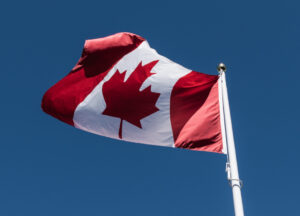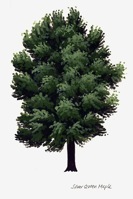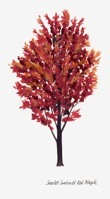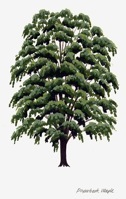Canadians see the Maple leaf every time they see the Canadian flag.

Maples have simple leaves with three to nine main veins that provide channels for nutrients and maintain the leaf’s structure, much the way the ribs of an umbrella do. The leaves have pointed lobes at the end of each leaf and always spread out face-up (the side without the veins) so they receive the maximum amount of sun.
All Maples have seeds in joined pairs known technically as “samara” but commonly called “keys” that fly down from the trees using their helicopter-like blades.

The distinctive Sugar Maples of eastern Canada turn red and orange before they lose their leaves in the fall, caused by the nutrients in the leaves being drawn back into the trunk of the tree. Sugar Maples are tapped in the spring for their sweet sap, which runs when the days are mild and sunny and the nights are frosty. 40 litres, or 40 gallons, of sap must be boiled down to make one litre or one gallon of maple syrup. Canada produces over 70% of the world’s supply of Maple syrup.
You can read more about the parts of a leaf and other clues to identifying trees in the Identifying Trees section.






